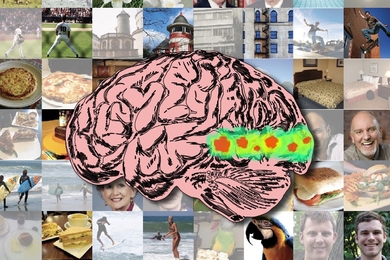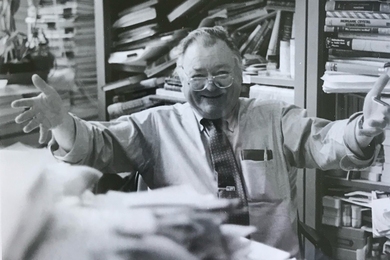Senior class gifts often result in something tangible -a clock tower, say, or new band uniforms-or at least something the college or university can put to use directly for the benefit of students, such as a scholarship fund.
The 1992 graduating class at MIT has something else in mind, however-an annual program to encourage junior high school students in disadvantaged areas across the country to pursue science and technological education and careers.
And if some come to MIT, so much the better.
Aileen W. Lee, president of the Class of 1992, will announce the unusual gift at MIT's 126th commencement June 1. She said the program will be undertaken in conjunction with the recently established MIT Council on Primary and Secondary Education and its "K-12 Initiative," which seeks to enhance the teaching of science in those grades.
The program will be funded initially, she said, with donations and pledges contributed by the Class of 1992. It will be run by volunteers from the Class of 1992 and subsequent classes.
The program's board of advisors will include Professor Ronald M. Latanision, director of the MIT Council on Primary and Secondary Education; Michael C. Behnke, director of admissions for MIT; and Alford Dyson, Jr., executive director of MIT's Cambridge Partnership for Public Education.
The class gift co-coordinators, Joanna E. Stone and Rizwan Q. Virk, said the senior gift project, named the Program for the Encouragement of Technology (PET) Fund, "will allow our class to serve as role models for the next generation of scientists and engineers, encouraging that generation to pursue the science and engineering disciplines."
"It is our goal to reach students early, to expose and excite them about the opportunities available in technological fields," Ms. Stone continued. "Studies indicate that it is in the junior high school years that students either choose to begin or are tracked out of the appropriate math and science classes necessary for the pursuit of scientific and technological careers. Our target is to reach students who have math/science aptitudes, but may never have heard about MIT or may never have thought it a viable option for their future."
According to Mr. Virk, the project will send MIT representatives-students and alumni/ae-to junior high schools in disadvantaged areas across the country for a full week.
The program representatives will bring computers donated by sponsoring corporations to the schools and will conduct seminars for the teachers and students. The week will end with a competition among the students, and "creative awards" for those showing promise and creativity.
"The idea," Mr. Virk said, "is to encourage all students who show promise, not just to reward those who have developed their math and science skills the most."
He said the program will make a special effort to "make a lasting impression" on the teachers who participate.
"The main reason why technology is not used or encouraged in many schools," he said, "is because the teachers themselves don't know how to use the technology. If the teachers aren't comfortable with it, they certainly won't incorporate changes into the curriculum to introduce the technology to new students every year."
The plan is to leave the corporate-donated computers at the schools for the teachers to use with their students. "By training the teachers to use them," he said, "we can insure that the equipment will continue to have an impact long after our representatives have left."
Teachers from the junior high schools will be invited to come to MIT for a week during the summer to take part in a special teacher training program conducted in cooperation with the K-12 Initiative.
Training sessions also will be held at MIT for the program representatives who will visit the junior high schools. The first group of ten student/alumni representatives will be selected by the end of this school year. They will be chosen on the basis of teaching ability, technical background, commitment to the program and life goals.
A version of this article appeared in the May 20, 1992 issue of MIT Tech Talk (Volume 36, Number 31).





